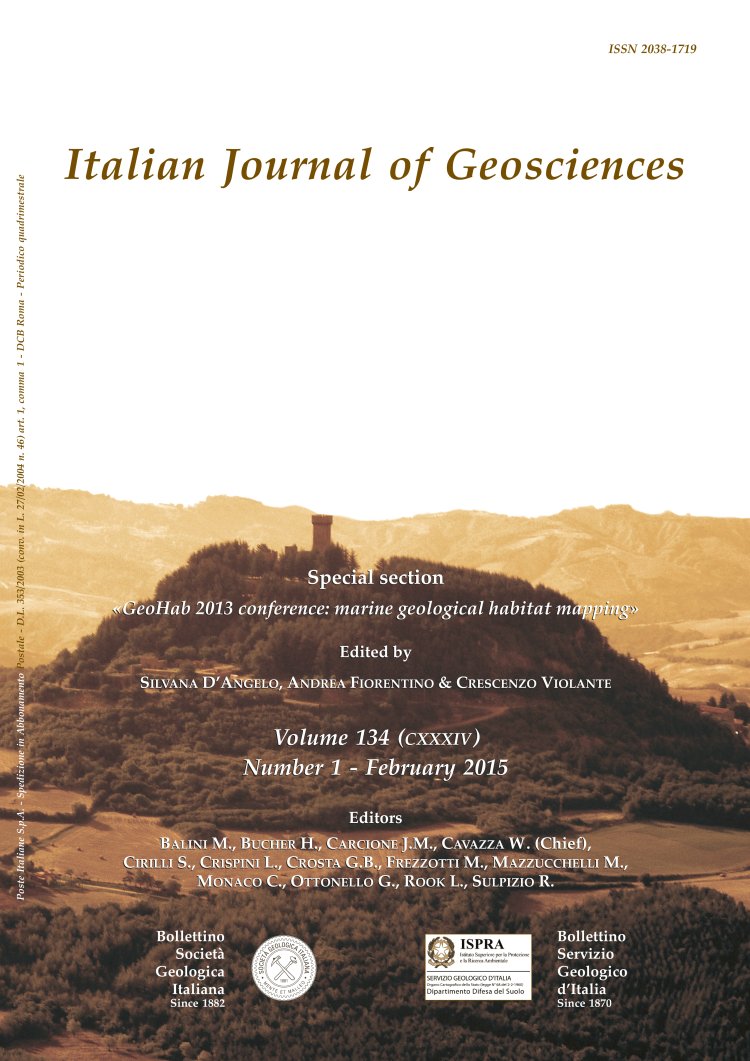
The investigation of a mixed carbonate-siliciclastic shelf, NE Brazil: side-scan sonar imagery, underwater photography, and surface-sediment data
Moab P. Gomes (*), Helenice Vital (*) (**), Patrícia P.B. Eichler (*) (***) & Barun K. Sen Gupta (****)
(*) Universidade Federal do Rio Grande do Norte, Pós-Graduação em Geodinâmica e Geofísica, C.P. 1596, Campus Universitário, Lagoa Nova, CEP: 59072-970, Natal-RN, Brazil; e-mail: gomesmp@geologia.ufrn.br; tel: +55 84 3215-3916; fax: +55 84 215-3831.
(**) helenice@geologia.ufrn.br
(***) patriciaeichler@gmail.com
(****) Department of Geology and Geophysics, Louisiana State University, Baton Rouge, LA 70803, USA; glbarun@lsu.edu; tel: +1 225 773-8452.
Volume: 134 (2015) f.1
Pages: 9-22
Abstract
Side-scan sonar imagery and underwater photography, coupled with bathymetric and sedimentologic data, revealed noteworthy features and the interplay of multiple processes on the north-eastern Brazilian continental shelf. The high-resolution data cover a 500 km2 area of the shallow (~70 m) and narrow (~40 km) shelf, which comprises the submerged portion of the Potiguar Basin; the area includes the partially filled incised valley of the ancient Açu River.
The seafloor imagery was integrated with 673 surface sediment samples to distinguish boundaries within the mixed siliciclastic-carbonate region. The sediment grain size increases from nearshore, muddy, siliciclastic sediments to biogenic, coarse sand and gravel on the outer shelf. Carbonate-rich sediment predominates, except on the eastern margin of the Açu Incised Valley (AIV), the nearshore zone and estuary mouths. The AIV is filled mainly with muddy sediments reworked from the latest transgressive deposits. Bedform configurations indicate bottom currents associated with tidal and wave-driven currents.
Mixing processes are controlled by the interplay of high hydrodynamic energy regime and shelf physiography. Special attention was paid to the middle and outer shelves, where a large field of newly found reefs occurs between 20 and 50 m depths. The reef substrate is composed of limestones, probably belonging to the Guamaré Formation.
SCUBA dive inspections revealed benthic colonies (corals: Montastraea cavernosa, Porites astreoides, Siderastrea stellata; sponges: Scopalina ruetzleri, Callyspongia vaginalis, Ectyoplasia ferox, Ircinia sp., Spirastrella sp., Aiolochroia sp.) over fossil reefs. A preliminary examination of the foraminiferal species showed a Caribbean-type reef community, including Amphisorus hemprichii, Amphistegina gibbosa, Archaias angulatus, Heterostegina antillarum, Homotrema rubra, Peneroplis carinatus and P. proteus.
Keywords
Side-scan sonar, incised valley, siliciclasticcarbonate system, patch reefs, macrobenthos, foraminifera, Potiguar Basin.
Get Full Text